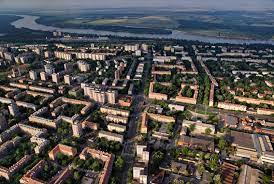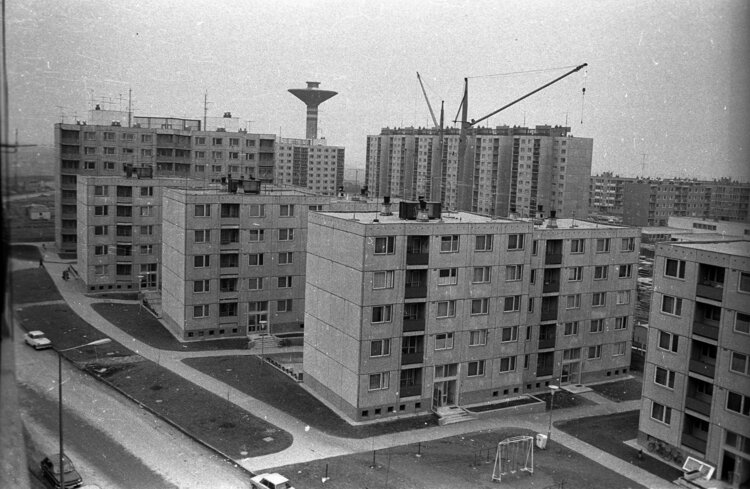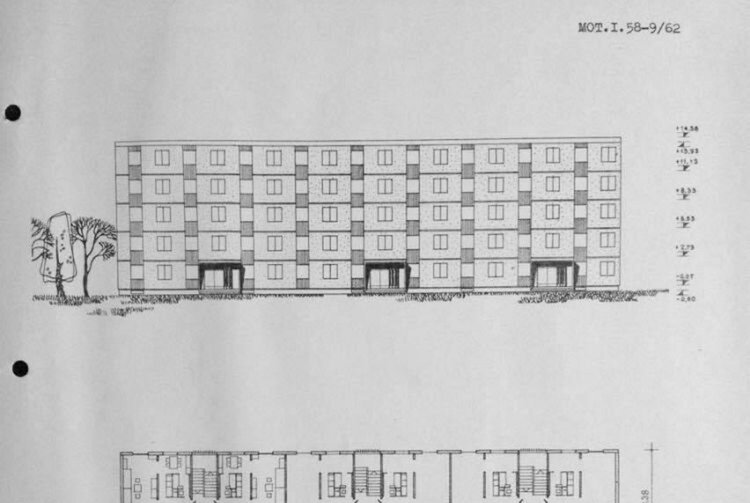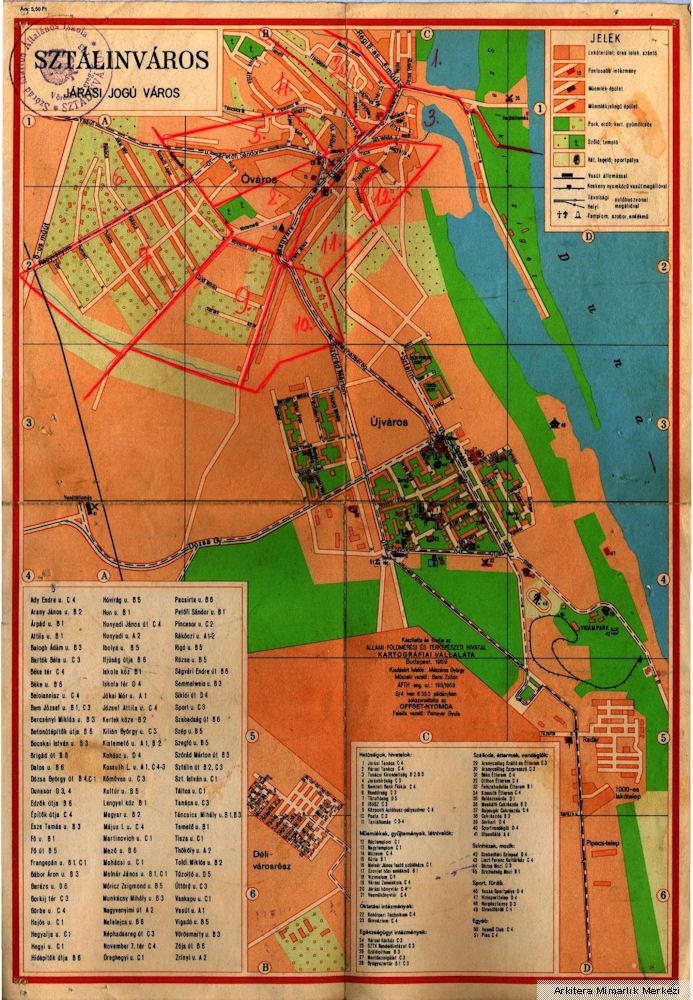|
|
Dunaújváros (Dunapentele / Sztálinváros), Hungary, Europe |
|
|
|
|
|
|

Modern cityscape
source: https://hungarytoday.hu/d
unaujvaros-joins-governme
nts-modern-cities-scheme-
leave-behind-20th-century
-past-16054/

Construction of panel
buildings in
Dunaújváros
source: https://www.anthropologyo
farchitecture.com/past-an
d-present-intertwined-in-
post-socialist-hungary/

Blueprint for a
residential building in
Dunaújváros, plans by
main architect Tibor
Weiner
source: https://www.anthropologyo
farchitecture.com/past-an
d-present-intertwined-in-
post-socialist-hungary/
|

First named Stalinvaros (Stalintown), the ironworks town Dunaujvaros was part of the planning and building of 11 postwar New Towns led by the National Planning Office, which was virtually a part of the Communist Party, reflecting Hungary's industrialization and new socialist bureaucracy. The Hungarian architect Tibor Weiner, chosen to design Stalintown by the Institute of Town Planning, had studied at the Bauhaus in Dessau, worked in the Soviet Union in the 30s and in Chile during the war. With roots in prewar modernism, it was difficult for Hungarian architects like Weiner to adopt the new style of socialist-realism dictated by Moscow.
Originally the area was designed only for the workers themselves, however, planners soon realised that they would also have to accommodate their families. Women could work in light industries such as textiles. Most families had at least one person undertaking some kind of education.
By 1966 Dunaújváros had a population of 45,000 and a bus network which would bring workers to and from nearby villages. Rents in the city remained ridiculously low. A month’s rent for a 2 bedroom flat could be made in a 12 hour shift. This was partly possible due to the use of prefabricated housing.
The city has marketed itself as a true socialist style city and has attracted visitors from around the world. The population has remained much the same since the 1960’s but it has enhanced its economy through manufacturing and good transport connections.
source: Henriett Szabo, "Stalintown" in: Cor Wagenaar (ed.) "Happy Cities and Public Happiness in Post-War Europe", NAi Publishers, Rotterdam 2004 |
|
2008 - 2024 disclaimer
|

